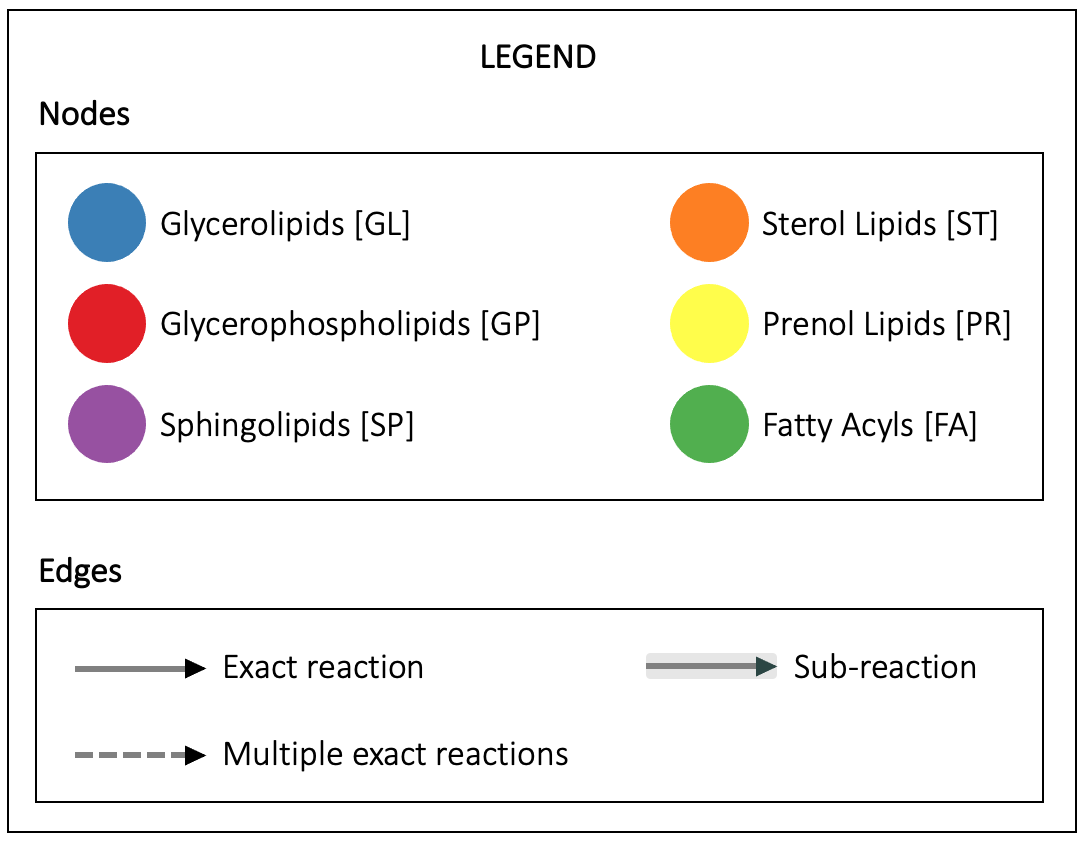Structure Database (LMSD)
Common Name
TG(22:1(13Z)/22:1(13Z)/22:1(13Z))
Systematic Name
1,2,3-tri-(13Z-docosenoyl)-glycerol
Synonyms
- TG(22:1/22:1/22:1)
3D model of TG(22:1(13Z)/22:1(13Z)/22:1(13Z))
Please note: Where there are chiral atoms but the stereochemistry is undefined, the 3D model takes an arbitrary conformation
Classification
Biological Context
1,2,3-Tri-13(Z)-docosenoyl glycerol is a triacylglycerol that contains 13(Z)-docosenoic acid at the sn-1, sn-2, and sn-3 positions and has been found in nasturtium seed oil.1 1,2,3-Tri-13(Z)-docosenoyl glycerol (30% of fat calories in a 60% fat diet), in combination with sunflowerseed oil, induces severe cardiac lipidosis in rats after 1 week, with severity decreasing by 24 weeks.2 1,2,3-Tri-13(Z)-docosenoyl glycerol is a minor component of Lorenzo’s oil.3
This information has been provided by Cayman Chemical
References
2. Abdellatif, A.M., and Vles, R.O. Short-term and long-term pathological effects of glyceryl trierucate and of increasing levels of dietary rapeseed oil in rats. Nutr. Metab. 15(4), 219-231 (1973).
3. Deineka, V.I., Deineka, L.A., Fofanov, G.M., et al. Reversed-phase HPLC of seed oils to establish triglyceride fatty acid composition. Rastitel'nye Resursy 40(1), 104-112 (2004).
Reactions
Filter by species:
ⓘ
Reactions are shown if the E.C. number of the enzyme catalysing it is annotated in the UniProt database for a species belonging to the selected taxonomic class.
Click on an edge to display the reaction(s).

String Representations
InChiKey (Click to copy)
XDSPGKDYYRNYJI-IUPFWZBJSA-N
InChi (Click to copy)
InChI=1S/C69H128O6/c1-4-7-10-13-16-19-22-25-28-31-34-37-40-43-46-49-52-55-58-61-67(70)73-64-66(75-69(72)63-60-57-54-51-48-45-42-39-36-33-30-27-24-21-18-15-12-9-6-3)65-74-68(71)62-59-56-53-50-47-44-41-38-35-32-29-26-23-20-17-14-11-8-5-2/h25-30,66H,4-24,31-65H2,1-3H3/b28-25-,29-26-,30-27-
SMILES (Click to copy)
C(OC(=O)CCCCCCCCCCC/C=C\CCCCCCCC)[C@]([H])(OC(CCCCCCCCCCC/C=C\CCCCCCCC)=O)COC(CCCCCCCCCCC/C=C\CCCCCCCC)=O
Other Databases
Calculated Physicochemical Properties
Heavy Atoms
75
Rings
0
Aromatic Rings
0
Rotatable Bonds
65
Van der Waals Molecular Volume
1239.16
Topological Polar Surface Area
78.90
Hydrogen Bond Donors
0
Hydrogen Bond Acceptors
6
logP
23.63
Molar Refractivity
327.05
Admin
Created at
-
Updated at
25th Apr 2022
LIPID MAPS® abbreviations for glycerolipids (GL)
The LIPID MAPS® glycerolipid abbreviations (MG,DG,TG) are used here to refer to species with one, two or three radyl side-chains, respectively, where the structures of the side chains are indicated within parentheses in the 'Prefix(sn1/sn2/sn3)' format (e.g. TG(16:0/18:1(9Z)/18:0). Acyl chains are assumed by default. The alkyl ether linkage is represented by the 'O-' prefix, e.g. DG(O-16:0/18:1(9Z)/0:0), whereas the 1Z-alkenyl ether (Plasmalogen) linkage is represented by the 'P-' prefix, e.g. and DG(P-14:0/18:1(9Z)/0:0).
For Diradylglycerols and Triradylglycerols, it is not always possible to experimentally determine the exact position of radyl groups on the glycerol group. For Diradylglycerols with two different radyl groups, two different structural isomers exist. For Triradylglycerols with three different radyl groups, six different isomers exist.
Instead of drawing all possible structural isomers explicitly for Diradylglycerols and Triradylglycerols, the LIPID MAPS® abbreviation scheme supports the isomeric specification. A suffix containing 'iso' along with the number of possible isomers is appended to the abbreviation (e.g. [iso2],[iso6]) and a single unique LM_ID is assigned. The structure assigned to the LM_ID corresponds to the radyl substitution shown in the abbreviation. An option is provided to display the other isomers in the group.
The [rac] designation refers to racemic mixtures due to substitution at the sn1 and sn3 positions of glycerol.
The LIPID MAPS® glycerolipid abbreviations (MG,DG,TG) are used here to refer to species with one, two or three radyl side-chains, respectively, where the structures of the side chains are indicated within parentheses in the 'Prefix(sn1/sn2/sn3)' format (e.g. TG(16:0/18:1(9Z)/18:0). Acyl chains are assumed by default. The alkyl ether linkage is represented by the 'O-' prefix, e.g. DG(O-16:0/18:1(9Z)/0:0), whereas the 1Z-alkenyl ether (Plasmalogen) linkage is represented by the 'P-' prefix, e.g. and DG(P-14:0/18:1(9Z)/0:0).
For Diradylglycerols and Triradylglycerols, it is not always possible to experimentally determine the exact position of radyl groups on the glycerol group. For Diradylglycerols with two different radyl groups, two different structural isomers exist. For Triradylglycerols with three different radyl groups, six different isomers exist.
Instead of drawing all possible structural isomers explicitly for Diradylglycerols and Triradylglycerols, the LIPID MAPS® abbreviation scheme supports the isomeric specification. A suffix containing 'iso' along with the number of possible isomers is appended to the abbreviation (e.g. [iso2],[iso6]) and a single unique LM_ID is assigned. The structure assigned to the LM_ID corresponds to the radyl substitution shown in the abbreviation. An option is provided to display the other isomers in the group.
The [rac] designation refers to racemic mixtures due to substitution at the sn1 and sn3 positions of glycerol.